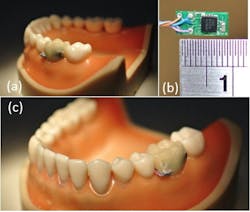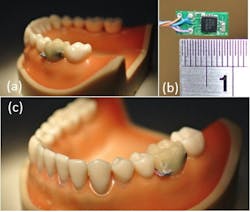Researchers develop oral sensor to track eating, drinking habits
August 6, 2013
How often do your patients lie about what they’re eating, drinking, smoking, or chewing? I know that when I had braces, I stopped biting my nails and chewing gum – at least, that’s what I told my orthodontist. What happens when you can’t rely on patients to follow instructions – or tell you when they’ve habitually slipped up.
Excellent idea of the day: tooth tattoos
Researchers from National Taiwan University in Taipei have developed an oral sensor that will be used to tell doctors what their patients did and when – from speaking and coughing to drinking and eating. The sensor, which can fit on a fake tooth or braces, judges oral activity by the movement of teeth.
The top 15 articles for dentists and the dental industry in 2013
Though previous research has been conducted to study oral habits, this study is unique for using a sensor that was actually in the mouth.
The researches conducted their experiment on eight participants and found that the sensor could tell what activity was taking place around 94% of the time. Participants said that the sensor felt like a piece of popcorn that had been stuck between their teeth.
Hopefully, the next prototype will be more comfortable. The researchers plan to make it wireless with battery-recharging capabilities (wearers would remove the fake tooth at night to recharge it).
Finally, why are the researchers using this oral activity model? “Because the mouth is an opening into human health, this oral sensory system has the potential to enhance existing oral-related healthcare monitoring applications such as dietary tracking.”
Click here to read the short research overview, “Sensor-Embedded Teeth for Oral Activity Recognition.”


